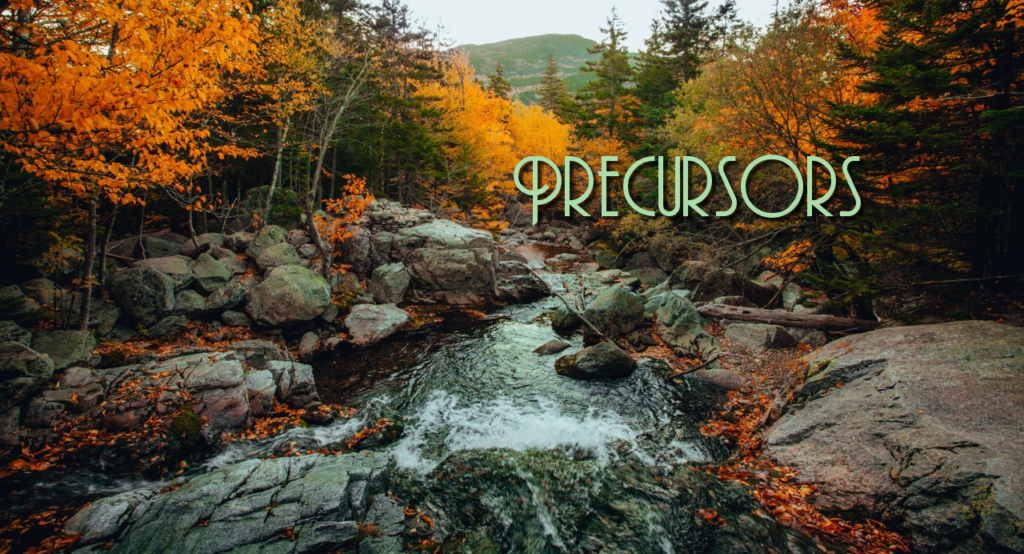 Born April 25, 1905 in Chicago, Illinois, art director Harold (Hal) Pereira and his brother, architect William Pereira (born in 1909), began their highly successful careers after graduating college in the 1930s. They designed, among other things, Chicago’s Esquire Theatre, one of the city’s best examples of Art Deco. They later moved to Los Angeles where William designed the Motion Picture Country Home in Woodland Hills while Hal went to work for Paramount.
Born April 25, 1905 in Chicago, Illinois, art director Harold (Hal) Pereira and his brother, architect William Pereira (born in 1909), began their highly successful careers after graduating college in the 1930s. They designed, among other things, Chicago’s Esquire Theatre, one of the city’s best examples of Art Deco. They later moved to Los Angeles where William designed the Motion Picture Country Home in Woodland Hills while Hal went to work for Paramount.
Working under the tutelage of art department head, Hans Dreier, Hal’s first major film was Billy Wilder’s 1944 masterwork, Double Indemnity. In 1950, he replaced Dreier upon the latter’s retirement, a position he held until Paramount’s acquisition by Gulf & Western in the late 1960s.
Hal’s output totaled 285 projects during his tenure at the studio. Some of the highlights of the early 1950s included such diverse films as The Mating Season, Ace in the Hole, When Worlds Collide, Detective Story, The Greatest Show on Earth, Carrie (for which he received the first of his 23 Oscar nominations), Just for You, Come Back, Little Sheba, The War of the Worlds, Stalag 17, Roman Holiday, Little Boy Lost, Elephant Walk, The Naked Jungle, Rear Window, Sabrina, White Christmas, The Country Girl, and The Bridges at Toko-Ri.
His output in the late 1950s was equally impressive. During this period, Hal worked on such highly regarded films as Strategic Air Command, The Seven Little Foys, To Catch a Thief, The Trouble with Harry, the Desperate Hours, The Rose Tattoo (for which he won his only Oscar), The Court Jester, The Man Who Knew Too Much, The Proud and Profane, The Ten Commandments, Funny Face, Fear Strikes Out, Gunfight at the O.K. Corral, The Joker Is Wild, The Tin Star, Wild Is the Wind, Teacher’s Pet, Vertigo, I Married a Monster from Outer Space, The Five Pennies, But Not for Me, and Career.
With no letup in sight, Hal continued to flourish in the early 1960s with such distinctive films as One-Eyed Jacks, The Pleasure of His Company, Summer and Smoke, Breakfast at Tiffany’s, The Counterfeit Traitor, The Man Who Shot Libert Valance, Hatari!, My Six Loves, Hud, Come Blow Your Horn, Donovan’s Reef, A New Kind of Love, Love with the Proper Stranger, The Carpetbaggers, Lady in a Cage, Where Love Has Gone, and Roustabout.
In the late 1960s, Hal was still cranking out such films as The Slender Thread, Boeing, Boeing, The Spy Who Came in from the Cold, The Oscar, Nevada Smith, This Property s Condemned, El Dorado, Barefoot in the Park, The President’s Analyst, and The Odd Couple. He even took time out to provide the art direction for The 39th Academy Awards, the 1966 awards presented in April 1967.
After he left Paramount in 1968, Hal worked as a design consultant in the architectural firm of his famous brother. Among William’s accomplishments in this period were his designs of San Francisco’s Transamerica Building, the Disneyland Hotel in Anaheim, the campuses of the University of Southern California, the University of California Irvine, and Pepperdine University.
Hal Pereira died December 17, 1983 at 78.
William Pereira died November 13, 1985 at 76.
WHITE CHRISTMAS (1954), directed by Michael Curtiz
One of fifteen films that Hal Pereira worked on in 1954 was White Christmas. which was the most popular film of the year. Surely you remember the nightclub sets, the train, and of course, the Vermont inn to which Bing Crosby, Danny Kaye, Rosemary Clooney, and Vera-Ellen entertained. You must also remember from that year, the apartment from which voyeur James Stewart, his girlfriend Grace Kelly, and wisecracking Thelma Ritter observed Stewart’s neighbors. Then there was that Long Island estate in Sabrina in which brothers Humphrey Bogart and William Holden pursued chauffer’s daughter Audrey Hepburn in the moonlight.
VERTIGO (1958), directed by Alfred Hitchcock
Of the many Hitchcock films for which Pereira provided the design, none was more memorable than this, misunderstood in its day, but now regarded as one of the greatest films ever made. From Barbara Bel Geddes’ studio at which James Stewart spent his recovery from the his initial bout with Vertigo to the many locations in which he spotted Kim Novak or someone he mistook for her, the art direction was flawless as it was with the numerous other films Pereira designed for Hitchcock including Rear Window, To Catch a Thief, The Trouble with Harry, and The Man Who Knew Too Much.
BREAKFAST AT TIFFANY’S (1961), directed by Blake Edwards
Who can forget Audrey Hepburn’s apartment, especially the window from which she introduced “Moon River” to the world, the party scenes, or practically anything else about it? This was the fourth Hepburn film for which Pereira provided the art direction. The others were Roman Holiday in which she spent the night with Gregory Peck and went home with an Oscar, Sabrina in which she didn’t have far to go home with either Humhrey Bogart or William Holden, and Funny Face in which she sparkled through multiple sets with Fred Astaire from Kay Thompson’s “think pink” magazine office to an underground café to Gay Paree.
LOVE WITH THE PROPER STRANGER (1963), directed by Robert Mulligan
Pereira provided designs for fourteen films in 1963 including a TV movie about Alexander the Great. On the big screen, he gave us everything from the Texas ranch house shared by Paul Newman, Patricia Neal, Melvyn Douglas, and Brandon de Wilde in Hud to the interior of Macy’s Department Store where Natalie Wood is employed to various apartments for Wood, Steve McQueen and others in Love with the Proper Stranger. In-between he designed Frank Sinatra’s posh Manhattan apartment and the humbler abode of Lee J. Cobb and Molly Picon as his parents in Come Blow Your Horn, earning Oscar nominations for all three.
BAREFOOT IN THE PARK (1967), directed by Gene Saks
Pereira went out in style, designing the NYC apartments for two films based on Broadway plays from Neil Simon. First up was 1967’s Barefoot in the Park in which newlyweds Jane Fonda and Robert Redford live in a fifth-floor walk-up with eccentric neighbors like self-proclaimed dirty old man Charles Boyer, who unlikely as it may seems, falls head-over-heels for Fonda’s strait-laced mother delightfully played by Mildred Natwick in an Oscar-nominated performance. Next up was The Odd Couple with super clean Jack Lemmon and super sloppy Walter Matthau which subsequently became a long-running TV show with Tony Randall and Jack Klugman.
HAL PEREIRA AND OSCAR
Carrie (1952) – Nominated – Best Art Direction-Set Decoration, Black-and-White
Roman Holiday (1953) – Nominated – Best Art Direction-Set Decoration, Black-and-White
The Country Girl (1954) – Nominated – Best Art Direction-Set Decoration, Black-and-White
Sabrina (1954) – Nominated – Best Art Direction-Set Decoration, Black-and-White
Red Garters (1954) – Nominated – Best Art Direction-Set Decoration, Color
The Rose Tattoo (1955) – Oscar – Best Art Direction-Set Decoration, Black-and-White
To Catch a Thief (1955) – Nominated – Best Art Direction-Set Decoration, Color
The Proud and Profane (1956) – Nominated – Best Art Direction-Set Decoration, Black-and-White
The Ten Commandments (1956) – Nominated – Best Art Direction-Set Decoration, Color
Funny Face (1957) – Nominated – Best Art Direction-Set Decoration
Vertigo (1958) – Nominated – Best Art Direction-Set Decoration, Black-and-White or Color
Career (1959) – Nominated – Best Art Direction-Set Decoration, Black-and-White
Visit to a Small Planet (1960) – Nominated – Best Art Direction-Set Decoration, Black-and-White
It Started in Naples (1960) – Nominated – Best Art Direction-Set Decoration, Color
Breakfast at Tiffany’s (1961) – Nominated – Best Art Direction-Set Decoration, Color
Summer and Smoke (1961) – Nominated – Best Art Direction-Set Decoration, Color
The Pigeon That Took Rome (1962) – Nominated – Best Art Direction-Set Decoration, Black-and-White
Hud (1963) – Nominated – Best Art Direction-Set Decoration, Black-and-White
Love with the Proper Stranger (1963) – Nominated – Best Art Direction-Set Decoration, Black-and-White
Come Blow Your Horn (1963) – Nominated – Best Art Direction-Set Decoration, Color
The Slender Thread (1965) – Nominated – Best Art Direction-Set Decoration, Black-and-White
The Spy Who Came in from the Cold (1965) – Nominated – Best Art Direction-Set Decoration, Black-and-White
The Oscar (1966) – Nominated – Best Art Direction-Set Decoration, Color














Leave a Reply